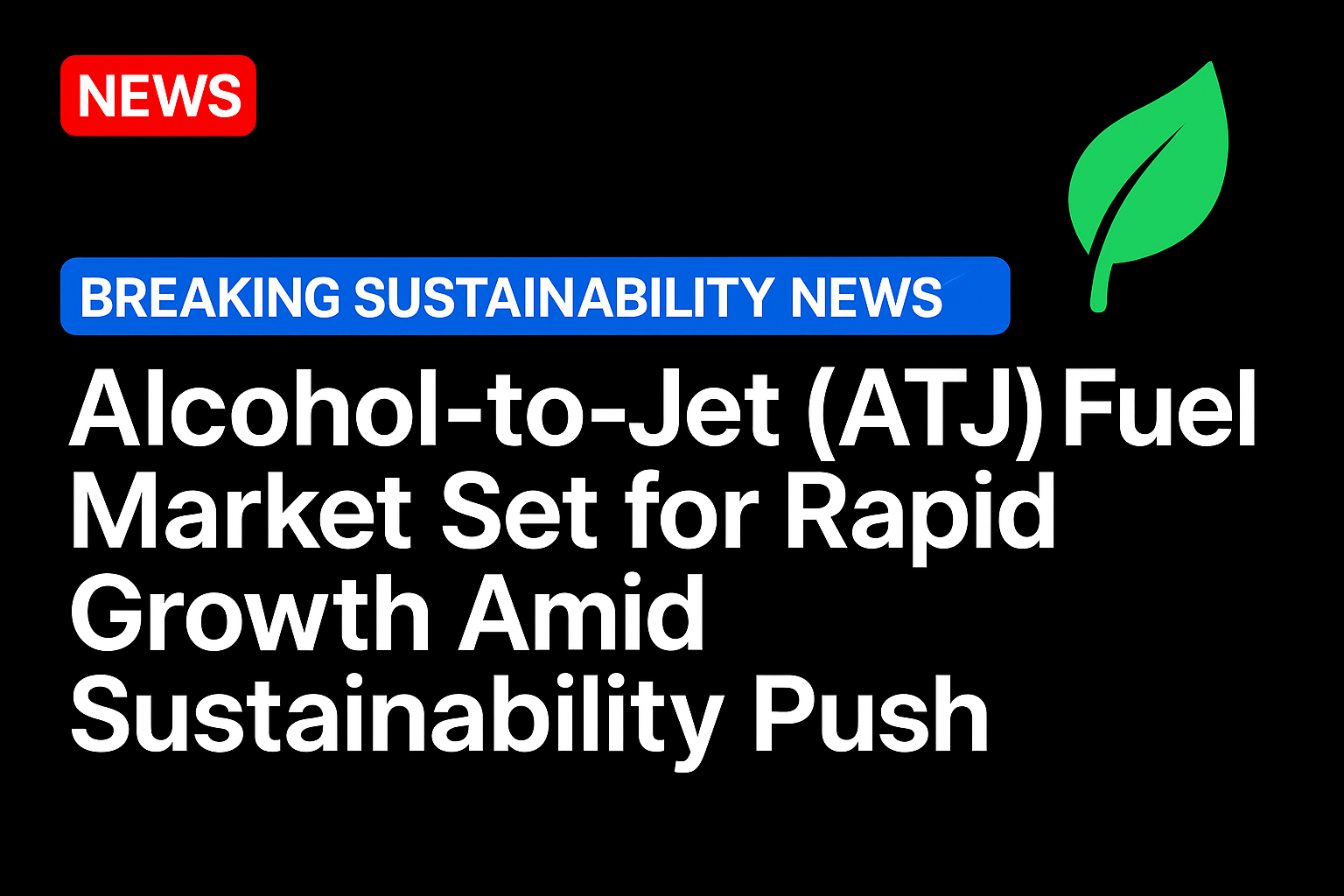The Alcohol‑to‑Jet (ATJ) fuel market is experiencing a major expansion, driven by rising global commitments to sustainable aviation and decarbonisation of air travel.
📈 Market Forecasts & Growth
- One forecast projects growth from USD 2.83 billion in 2024 to USD 28.06 billion by 2037, reflecting a compound annual growth rate (CAGR) of 19.3% Reuters+15Research Nester+15MarkWide Research+15.
- Another report estimates the market will expand from about USD 300 million in 2023 to roughly USD 1.8 billion by 2032, at a 21.5% CAGR Dataintelo.
These projections indicate strong investor confidence and rapid adoption of ATJ technology.
✈️ Why ATJ Is Gaining Traction
- Aviation emissions account for around 2–3% of global CO₂, prompting the industry to pursue low-carbon alternatives lpinformationdata.com+13Verified Market Reports+13acutemarketreports.com+13.
- ATJ fuel, produced from biomass-based alcohols like ethanol and butanol, can reduce lifecycle carbon emissions by 50–80% compared to traditional jet fuel Dataintelo+3Market.us+3P Market Research+3.
- It also integrates with existing aircraft engines and infrastructure, making it a drop-in replacement without modifying equipment acutemarketreports.com+1Market.us+1.
🌱 Feedstock & Technology
- Ethanol is currently the most common feedstock, supported by its availability and established supply chains Market.us+1acutemarketreports.com+1.
- Other viable inputs include butanol, lignocellulosic biomass, and municipal waste. Technological advances like catalytic dehydration and fermentation are boosting production efficiency Verified Market Reports+2Research Nester+2P Market Research+2.
🏭 Regional Industry Leaders
- North America leads the market with around a 41% share, thanks to federal programs and SAF mandates resourcewise.com+5Research Nester+5Market.us+5.
- Europe follows closely, capturing nearly 38%, supported by strong environmental regulations arXiv+13Research Nester+13Verified Market Reports+13.
- The Asia-Pacific region, including China and India, is emerging as a high-growth market driven by expanding air travel and policy support marketmonitorglobal.com+4acutemarketreports.com+4Research Nester+4.
🚧 Challenges & Opportunities
- Feedstock availability remains a bottleneck, especially for waste-based alcohols, and high infrastructure costs are another hurdle arXiv.
- Still, with governments offering incentives and investment in biorefineries underway, ATJ is gaining momentum toward commercial scalability Reuters+12Research Nester+12acutemarketreports.com+12.
✅ Key Takeaway
The ATJ fuel market is on a swift trajectory toward mainstream adoption, fuelled by environmental regulations, tech improvements, and robust policy support. With projected growth up to nearly $30 billion by 2037, ATJ is emerging as a critical pathway in global efforts to decarbonise aviation.





